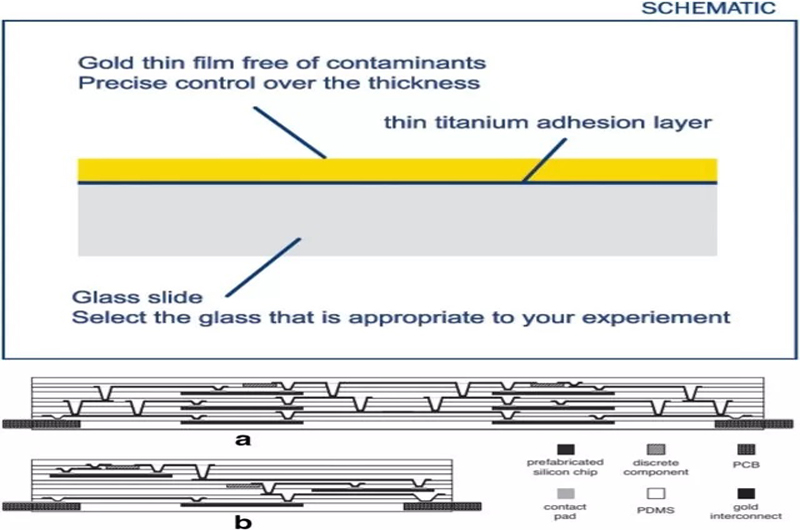Abstract
Microfluidic systems (MFS) provide a range of advantages in biomedical applications, including improved controllability of material characteristics and lower consumption of reagents, energy, time and money. Fabrication of MFS employs various materials, such as glass, silicon, ceramics, paper, and metals such as gold, copper, aluminum, chromium and titanium. In this review, gold thin film microfluidic channels (GTFMFC) are discussed with reference to fabrication methods and their diverse use in chemical and biomedical applications. The advantages of gold thin films (GTF) include flexibility, ease of manufacture, adhesion to polymer surfaces, chemical stability, good electrical conductivity, surface plasmon resonance effects, ability to be chemically functionalized, etc. Various electroactuators and electroanalytical devices can incorporate GTF. GTF-based MFS have been used in environmental monitoring, assays of biomarkers, immunoassays, cell culture studies and pathogen identification.

